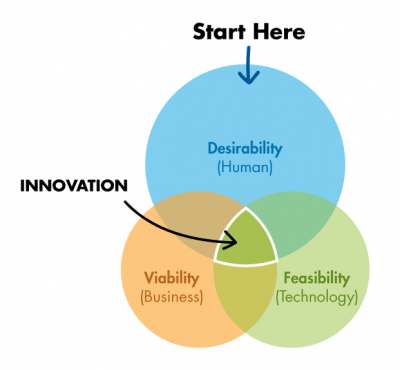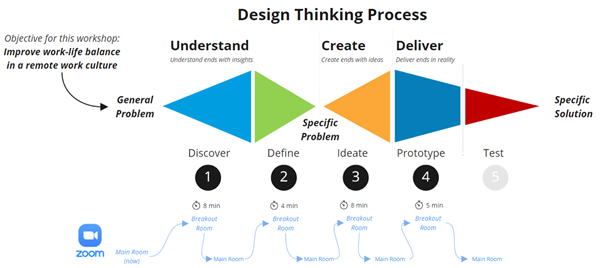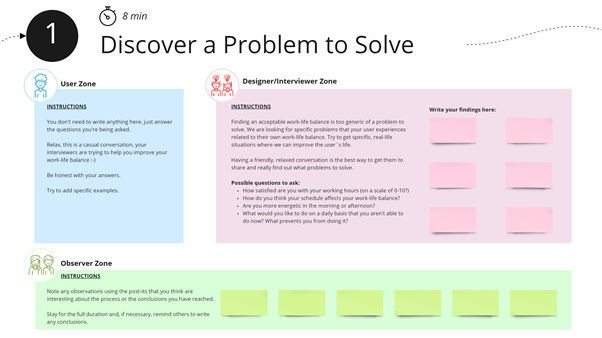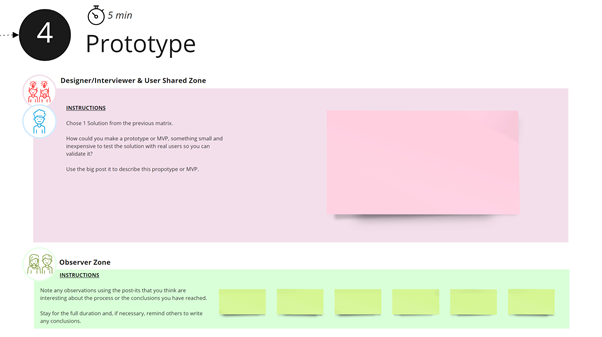
Agile 2021
(Design) Thinking Out of the Box
On 19th July 2021, we held an virtual workshop at Agile2021, organized by the Agile Alliance. Each year this is the largest Agile event in the world, and although this edition was virtual because of the pandemic, it’s still one of the most exciting conferences in the Agile community.
Our workshop, “(Design) Thinking Out of the Box”, was ideated for participants to experience the design thinking process and experiment with applying it at the organizational level. The design thinking workshop was built around a generic problem that the attendees themselves were experiencing: finding a work-life balance.
What is Design Thinking?
First, let’s back up for just a second to define Design Thinking. Design Thinking is a people-centered approach to finding solutions to complex problems. What does that mean? Instead of focusing on whether or not an idea is technically possible or if it is economically viable, Design Thinking starts by finding out what the user really wants and what they really need.

Design Thinking Workshop
Design Thinking uses the Double Diamond (created by the British company, Design Council) to move through its phases.
Since our design thinking workshop was only 50 minutes long, we dedicated the first 10 minutes to explain what is Design Thinking, and approximately 35 minutes to going through the process of the Design Thinking process, and covering the phases of Discover, Define, Ideate and Prototype. We did not include the Test phase for timing reasons. Here is a graphical representation of the agenda of the workshop:

This design thinking workshop was designed for a virtual conference so all phases used Miro for the work space. An image of the Miro board for each Phase is presented below. As depicted above, the groups joined the main room after each phase to reset and ask questions.
First, Define Roles
Before we got started going through the phases, we divided the larger group into smaller groups of 4-5 people and defined roles for each member:

Client/User (1 -2 people)
- You will be the user!
- You will be interviewed to help discover the problems you face in making your work-life balance more equitable.
- Be ready to explain aspects related to inconveniences you have regarding your own work-life balance.

Designer/Interviewer (1-3 people)
- You will ask questions to the user to discover and better understand the problem to be solved
- You will design solutions.

Observer (0-2 people)
- You will observe the process and take notes about interesting aspects that catch your attention.
- You will help ensure that conversations don’t beat around the bush.
- You are the time keeper. Be sure that activities stay within their allotted times and move forward at a good pace.
Phase 1: Discover the Problem to Solve

Client/User
- You don’t need to write anything here, just answer the questions you’re being asked.
- Relax, this is a casual conversation, your interviewers are trying to help you improve your work-life balance 🙂
- Be honest with your answers.
- Try to add specific examples.

Designer/Interviewer
- Finding an acceptable work-life balance is too generic of a problem to solve. We are looking for specific problems that your user experiences related to their own work-life balance. Try to get specific, real-life situations where we can improve the user’s life.
- Having a friendly, relaxed conversation is the best way to get them to share and really find out what problems to solve.
- Possible questions to ask:
- How satisfied are you with your working hours (on a scale of 0-10?)
- How do you think your schedule affects your work-life balance?
- Are you more energetic in the morning or afternoon?
- What would you like to do on a daily basis that you aren’t able to do now? What prevents you from doing it?

Observer
- Note any observations using the post-its that you think are interesting about the process or the conclusions you have reached.
- Stay for the full duration and, if necessary, remind others to write any conclusions.
Miro Board Design

Phase 2: Define the Specific Problem
In this phase, focus on specifying which problem you wanted to solve, of all the possible problems that involve our user.

Client/User + Designer/Interviewer
- Here you are working together to share the discoveries the interviewers made during the previous phase. We are going to specify the problem and, from now on, focus on it.
- You can summarize the problem statement using this pattern:
- [User Name] needs a way to [User Need] because [Insight]
- For example:
- Peter needs a way to spend more quality time with his kids because he’s always interrupted with phone calls and last minute meetings.
- Share the insights that the interviewer made during the previous phase.
- Reformulate the problem so that you can focus on it from here on.

Observer
- Note any observations using the post-its that you think are interesting about the process or the conclusions you have reached.
- Stay for the full duration and, if necessary, remind others to write any conclusions.
Miro Board Design

Phase 3: Develop a Solution
Starting with a specific problem, it is time to think about a solution. During the workshop, we applied brainstorming and a prioritization matrix. (But there are many other techniques.)

Client/User + Designer/Interviewer
- Think together about potential solutions that may solve the specific user’s need that you detailed on the problem statement you just formulated in Step 2.
- Write them in post-its in the appropriate quadrant on the Effort-Benefit matrix, depending on the expected benefit and effort required.
- The more ideas you can come up with, the better!

Observer
- Note any observations using the post-its that you think are interesting about the process or the conclusions you have reached.
- Stay for the full duration and, if necessary, remind others to write any conclusions.
Miro Board Design

Phase 4: Create a Prototype
Finally, it is time to propose how you might design a prototype. This prototype would be an MVP, something small and inexpensive that allows for the solution to be tested.

Client/User + Designer/Interviewer
- Choose one solution from the previous matrix.
- How could you make a prototype, or MVP, something small and inexpensive to test the solution with real users so you can validate it?
- Use the big post-it to describe this prototype or MVP.

Observer
- Note any observations using the post-its that you think are interesting about the process or the conclusions you have reached.
- Stay for the full duration and, if necessary, remind others to write any conclusions.
Miro Board Design

There’s a lot of different techniques that can be applied through this process. We used 6 of them:
- Personal Interview
- Brief
- Timeboxing
- Brainstorming
- Prioritization Matrix
- Rapid prototyping (description)
Full product solutioning with Design Thinking typically can’t be achieved in an hour, but this quick session is effective for helping participants experience our methodology based on the Double Diamond approach from start to finish and understand how an organization can benefit from this innovation-driven process.
You can access the session slides using this link and we also created a special infographic to summarize this Agile2021 workshop. Please download it!
Happy Design Thinking,
— Miquel & Juan Luis
PS: Be the first to know about more workshops like this by signing up for our #AlwaysLearning Community.
More on Design Thinking...
Take the next steps in your design thinking journey! Learn how to utilize the 5 stages of design thinking to reverse the chain of creation and put end users at the center of solution design from the beginning.
See what makes design thinking, design thinking, why it is important, and why we think it is a best practice that everyone should use.
Create value for customers and society. Design solutions that not only meet customer needs, but also ensure a proven positive impact on environmental sustainability.


